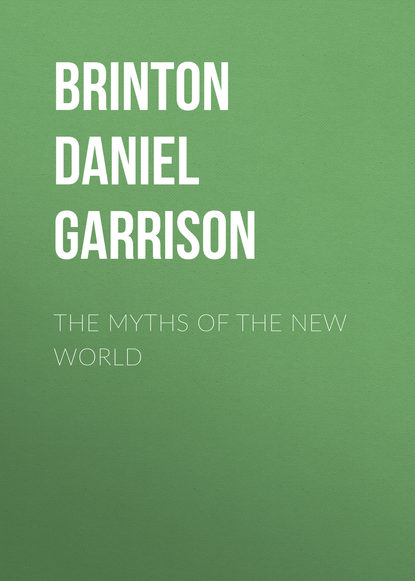По всем вопросам обращайтесь на: info@litportal.ru
(©) 2003-2024.
✖
The Myths of the New World
Настройки чтения
Размер шрифта
Высота строк
Поля
Schoolcraft, Ind. Tribes, v. p. 420.
130
Mrs. Eastman, Legends of the Sioux, p. 191: New York, 1849. This is a trustworthy and meritorious book, which can be said of very few collections of Indian traditions. They were collected during a residence of seven years in our northwestern territories, and are usually verbally faithful to the native narrations.
131
Müller, Amer. Urreligionen, p. 222, after De la Borde.
132
Acc. of the Inds. of California, ch. ix. Eng. trans. by Robinson: New York, 1847. The Acagchemem were a branch of the Netela tribe, who dwelt near the mission San Juan Capistrano (see Buschmann, Spuren der Aztek. Sprache, etc., p. 548).
133
Called in the Aztec tongue Tecolotl, night owl; literally, the stone scorpion. The transfer was mythological. The Christians prefixed to this word tlaca, man, and thus formed a name for Satan, which Prescott and others have translated “rational owl.” No such deity existed in ancient Anahuac (see Buschmann, Die Voelker und Sprachen Neu Mexico’s, p. 262).
134
Schoolcraft, Ind. Tribes, v. p. 420.
135
William Bartram, Travels, p. 504. Columbus found the natives of the Antilles wearing tunics with figures of these birds embroidered upon them. Prescott, Conq. of Mexico, i. p. 58, note.
136
Rel. de la Nouv. France, An 1636, ch. ix. Catlin, Letters and notes, Lett. 22.
137
Rel. de la Nouv. France, An 1648, p. 75; Cusic, Trad. Hist. of the Six Nations, pt. iii. The latter is the work of a native Tuscarora chief. It is republished in Schoolcraft’s Indian Tribes, but is of little value.
138
For example, in Brazil, Müller, Amer. Urrelig., p. 277; in Yucatan, Cogolludo, Hist. de Yucathan, lib. iv. cap. 4; among the western Algonkins, Hennepin, Decouverte dans l’Amer. Septen. chap. 33. Dr. Hammond has expressed the opinion that the North American Indians enjoy the same immunity from the virus of the rattlesnake, that certain African tribes do from some vegetable poisons (Hygiene, p. 73). But his observation must be at fault, for many travellers mention the dread these serpents inspired, and the frequency of death from their bites, e. g. Rel. Nouv. France. 1667, p. 22.
139
Narrative of the Captivity and Adventures of John Tanner, p. 356.
140
See Gallatin’s vocabularies in the second volume of the Trans. Am. Antiq. Soc. under the word Snake. In Arabic dzann is serpent; dzanan a spirit, a soul, or the heart. So in Hebrew nachas, serpent, has many derivatives signifying to hold intercourse with demons, to conjure, a magician, etc. See Noldeke in the Zeitschrift für Voelkerpsychologie und Sprachwissenschaft, i. p. 413.
141
Alexander Henry, Travels, p. 117.
142
Bost. Med. and Surg. Journal, vol. 76, p. 21.
143
Schwarz, Der Ursprung der Mythologie dargelegt an Griechischer und Deutscher Sage: Berlin, 1860, passim.
144
Rel. de la Nouv. France: An 1637, p. 53.
145
Sagen der Nord-Amer. Indianer, p. 21. This is a German translation of part of Jones’s Legends of the N. Am. Inds.: London, 1820. Their value as mythological material is very small.
146
Torquemada, Monarquia Indiana, lib. vi. cap. 37.
147
Müller, Amer. Urrelig., 221, after De la Borde.
148
Le Livre Sacré des Quichés, p. 3.
149
Rel. de la Nouv. France, 1648, p. 75.
150
Memoirs of Lieut. Henry Timberlake, p. 48: London, 1765. This little book gives an account of the Cherokees at an earlier date than is elsewhere found.
151
Hawkins, Sketch of the Creek Country, p. 80.
152
Schoolcraft, Algic Researches, i. p. 179 sq.; compare ii. p. 117.
153
Morgan, League of the Iroquois, p. 159; Cusic, Trad. Hist. of the Six Nations, pt. ii.
154











